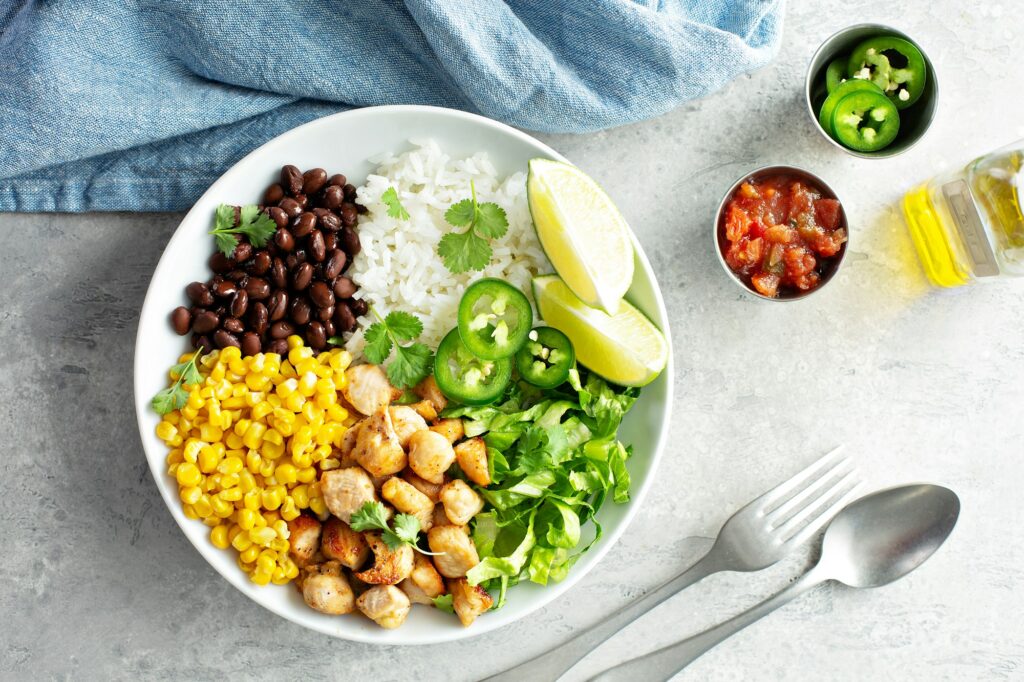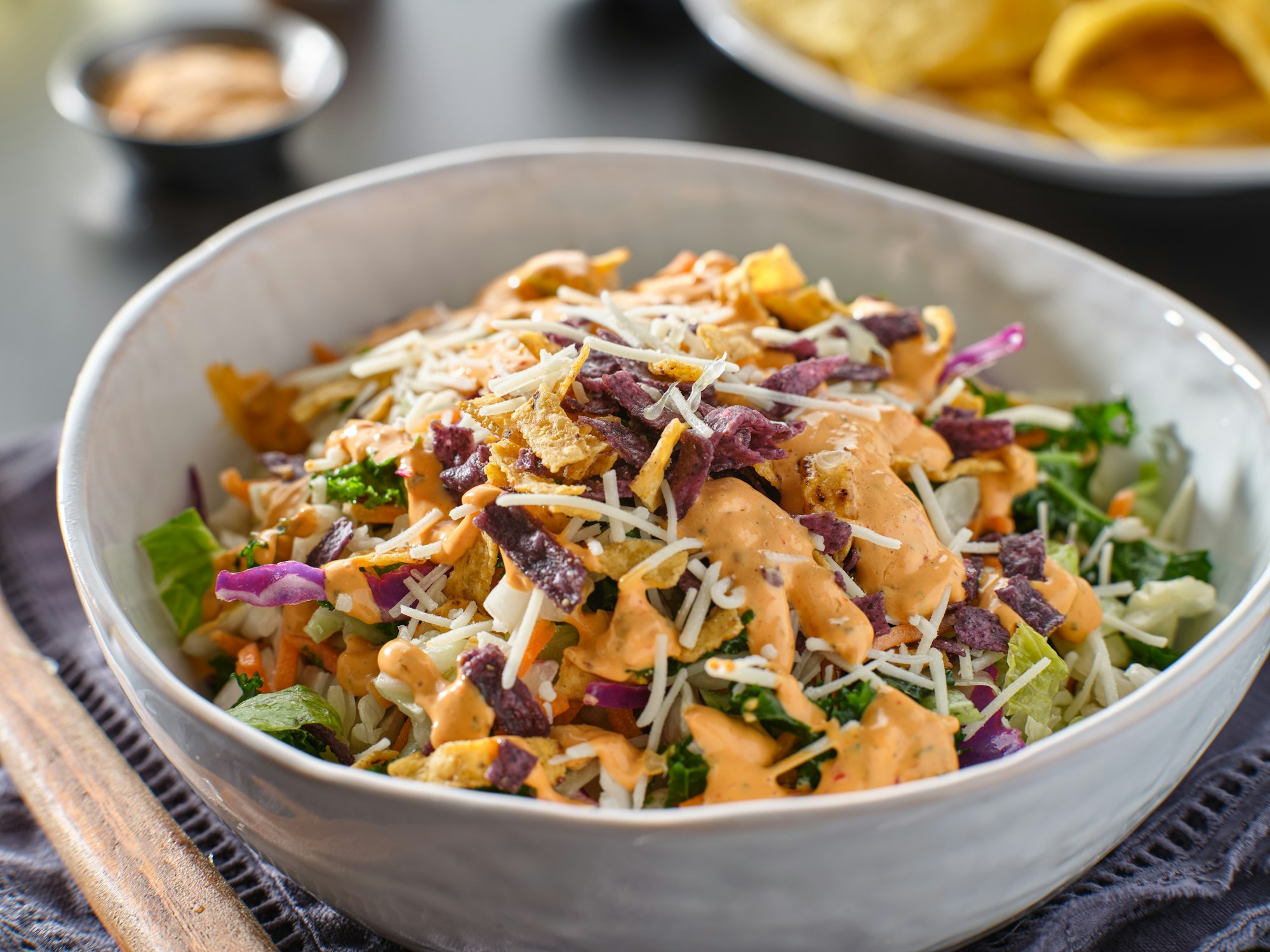The pictures in our articles might not always show exactly what the text is talking about. We use these images to make the article more interesting and eye-catching. They are there to add to the text, but not to replace it or show every detail.
In today's fast-paced world, finding a meal that's both nutritious and convenient can feel like searching for a needle in a haystack. Enter Chipotle's salads - a beacon of hope for health-conscious diners who don't want to sacrifice flavor or convenience. But what exactly makes these salads a standout option in the realm of fast-casual dining? Let's dive deep into the Chipotle salad nutrition facts and uncover why these customizable bowls have become a go-to choice for many.
The Nutritional Powerhouse: Breaking Down Chipotle Salads
Chipotle salads are far more than just a pile of lettuce. They're a carefully crafted combination of ingredients that can provide a balanced meal packed with essential nutrients. Let's break down the key components:
Customization: The Key to a Perfect Nutritional Balance

One of the most significant advantages of Chipotle salads is the ability to customize. This feature allows you to tailor your meal to your specific nutritional needs or dietary restrictions. Here's how you can make the most of this:
For the Calorie Conscious
If you're watching your calorie intake, focus on lean proteins like chicken or sofritas, load up on fajita veggies, and go easy on high-calorie toppings like cheese and sour cream. A salad with chicken, fajita veggies, and salsa can be under 400 calories.
For the Protein Seeker
Bodybuilders and fitness enthusiasts can maximize protein intake by choosing double meat options, adding beans, and including cheese. This can easily bump the protein content to over 50g per salad.
For the Carb Cutter
Those following low-carb or ketogenic diets can skip the beans and corn salsa, focusing instead on meats, cheese, guacamole, and sour cream. This creates a high-fat, low-carb meal that fits within their dietary guidelines.
For Plant-Based Eaters
Vegetarians and vegans aren't left out. A salad with sofritas or beans as the protein base, loaded with fajita veggies, corn salsa, and guacamole creates a nutrient-dense, plant-based meal.
Nutritional Breakdown: What’s Really in Your Bowl?
While the exact nutritional content of your Chipotle salad will depend on your specific choices, here's a general idea of what you might expect from a typical salad:
Remember, these numbers can vary significantly based on your choices. For example, adding guacamole will increase the calorie and fat content, but it also adds beneficial monounsaturated fats and vitamins.
The Hidden Heroes: Micronutrients in Chipotle Salads
While macronutrients often steal the spotlight, the micronutrients in Chipotle salads deserve attention too:
Potential Pitfalls: Navigating the Less Healthy Options
While Chipotle salads can be incredibly nutritious, there are some potential pitfalls to be aware of:
Making the Healthiest Choices at Chipotle
To maximize the nutritional benefits of your Chipotle salad, consider these tips:
Comparing Chipotle Salads to Other Fast-Casual Options
When stacked against other fast-casual dining options, Chipotle salads often come out on top in terms of nutritional value and customization options. Unlike pre-made salads at many chains, Chipotle allows you to control every aspect of your meal, making it easier to align with specific dietary needs or preferences.
FAQs About Chipotle Salads
Are Chipotle salads actually healthy?
Yes, when customized thoughtfully, Chipotle salads can be a very healthy meal option, providing a balance of protein, fiber, and essential nutrients.
Can I eat Chipotle salads if I’m on a diet?
Absolutely! The customizable nature of Chipotle salads makes them adaptable to many diets, including low-carb, high-protein, and plant-based diets.
What’s the lowest calorie protein option at Chipotle?
Chicken is typically the lowest calorie meat option, while sofritas is a good low-calorie plant-based choice.
Is the dressing at Chipotle healthy?
The vinaigrette dressing is made with rice bran oil and has a relatively balanced nutritional profile, but it does add extra calories and some sugar.
How can I make my Chipotle salad more filling without adding too many calories?
Adding extra fajita veggies and beans can increase the volume and fiber content of your salad without significantly increasing calories.
Conclusion: The Verdict on Chipotle Salad Nutrition
Chipotle salads stand out as a nutritious option in the fast-casual dining landscape. Their customizable nature allows for a wide range of dietary preferences and nutritional needs to be met. From high-protein fitness meals to low-carb keto options, vegan bowls to calorie-conscious choices, there's a healthy Chipotle salad for almost everyone.
The key to maximizing the nutritional benefits of your Chipotle salad lies in thoughtful customization. By understanding the nutritional content of each ingredient and making informed choices, you can create a meal that not only satisfies your taste buds but also nourishes your body.
Remember, while Chipotle salads can be a part of a healthy diet, variety is key to overall nutrition. Combine these salads with home-cooked meals and a diverse range of foods to ensure you're getting all the nutrients your body needs.
Next time you find yourself at Chipotle, armed with this knowledge about their salad nutrition facts, you can confidently build a bowl that aligns with your health goals. Enjoy your personalized, nutritious creation.






